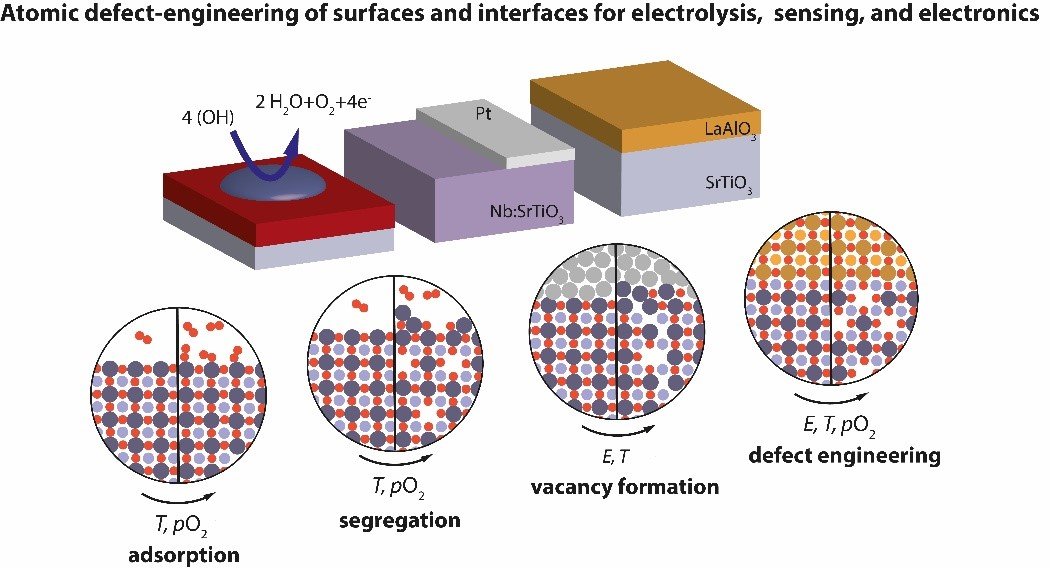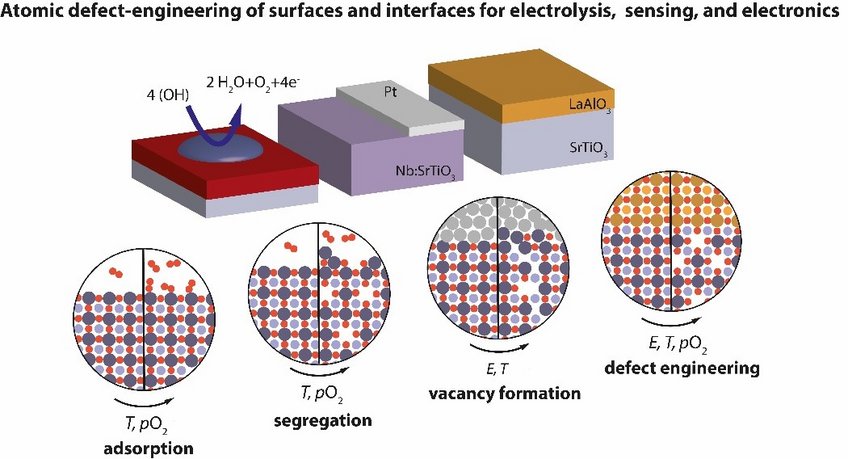
Nanoscale thermodynamics at complex oxide surfaces and interfaces for application in electronics, sensing, and energy conversion
Perovskite oxides exhibit a plethora of fascinating electronic material properties covering an exceptionally wide range of phenomena in solid state and surface physics. This has led to tremendous efforts to functionalize these materials in applications for energy technology, gas sensing, and electronics. Layered in an atomically defined epitaxial heterostructures and superlattices, diverse properties of perovskites can be combined on the nanoscale level. In such structures, even new functionality can arise at interfaces of layered materials, exhibiting properties that are absent in the bare bulk materials.
In our approach, we utilize atomically-defined layer growth to obtain desired material properties. However, on top of that, we employ thermodynamic engineering of crystal defects as a unique approach to functionalize material properties at surfaces and interfaces: Even at material synthesis conditions close to perfection, device properties are often determined by imperfection, hence, by lattice disorder and crystal defects. As we discuss, we can intentionally control defect structure in nanoscale devices, by developing and utilizing thermodynamic routes to trigger surface and interface reactions in confined systems.
While historically defects were seen as something to be avoided, a change of paradigm is required in the field of complex oxides today: In these materials, we can promote functionality, such as metallicity in nominally insulating compounds, by atomic defect-management. Therefore, rather than avoiding defect formation, it is an essential necessity to control and to utilize defect formation in oxides on the nanoscale.
Here, we discuss fundamental aspects of lattice disorder effects in bulk oxides, and elaborate the special character of defect formation in thin films, surfaces and interfaces. Focusing on SrTiO3 as a perovskite model system, we will crosslink fundamental perspectives on lattice disorder to actual applications, addressing different examples, such as resistive switching memories, high-mobility electron gases and induced magnetism, oxygen sensors, and electro-catalysts.

Dr. Felix Gunkel
| Institut für Werkstoffe der Elektrotechnik 2 (IWE2) | Electronic Materials | |||
| Walter-Schottky-Haus | Forschungszentrum Jülich | |||
| Sommerfeldstraße 18/24 | Peter Grünberg Institut (PGI-7) | |||
| 52074 Aachen | 52425 Jülich |
|
|||||||||||||||||||||
